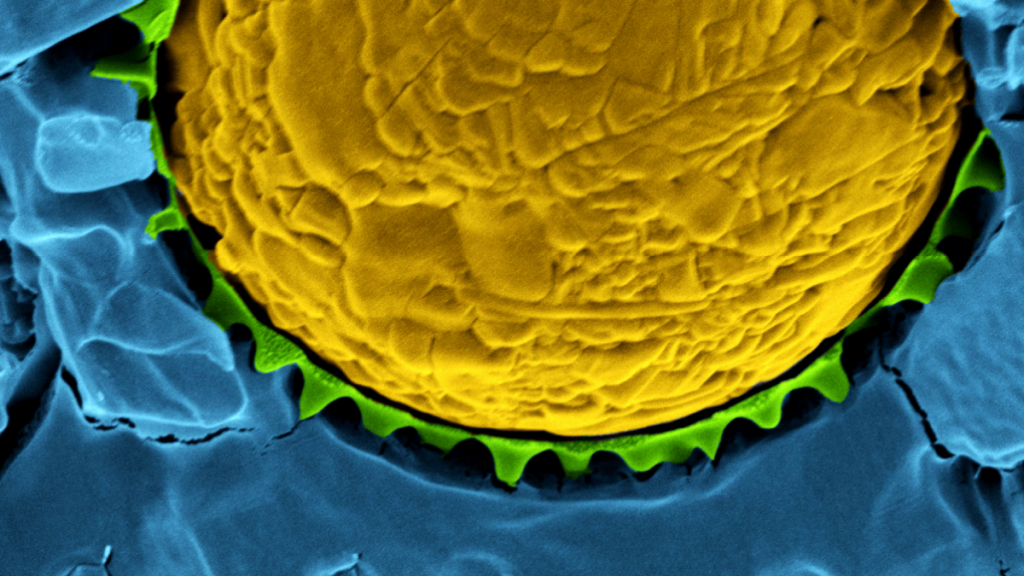How can we help you?
Please get in contact with us to find out more about ECFP and whether we can help you.
Emulsions consist of numerous droplets that are present in a liquid without dissolving and mixing with the liquid. For example, milk consists of fat droplets stabilised by milk proteins that are dispersed in water. In many applications such as medicine delivery, it is important to not only maintain the droplet structure but also to be able to control when the droplets release their contents. This is because the encapsulated active ingredients in the droplet should only be released once the medicine has entered the body.

In this study, researchers stabilised emulsions using temperature-sensitive microgel particles which form a thin protective shell around a droplet and adapt their shape to the ambient temperature (see the image above). At room temperature, the microgel particles swell in water, but above 32°C, they shrink and the droplet is released into the surrounding liquid. Researchers have now revealed the underlying mechanism behind this process.
The team, which includes researchers from ECFP and the University of Edinburgh, University of Gothenburg, Heinrich-Heine University Düsseldorf, ETH Zürich and the Osaka Institute of Technology, have revealed that the fundamental mechanism behind stimuli-responsive emulsions are morphological changes of the stabilizing microgels.
The stabilising microgels can be regarded as both particles and polymers. The particle character leads to high stability of the emulsion, while the polymer character makes the microgels responsive to external influences leading to controlled release of the droplets. Achieving temperature-sensitive emulsions necessitates a delicate balance, requiring a minimal particle character for stability and a substantial polymer character for rapid and reliable release of the droplets.
Pharmaceutical research on targeted medicines focuses on delivering medication in a higher concentration to specific diseased areas of the body rather than affecting the entire body, and responsive emulsions hold great potential for this.
Please get in contact with us to find out more about ECFP and whether we can help you.
ECFP delivers fundamental product insight enabling improved formulation and processing for a more sustainable future.